Matching Column Type
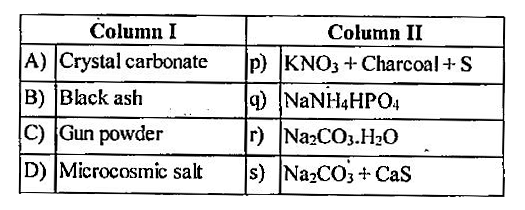 Solution in Malayalam
Solution in Malayalam
The correct Answer is:A−r B−s C−p D−q
A−r B−s C−p D−q
Topper's Solved these Questions
- S-BLOCK ELEMENTSBOOK - BRILLIANT PUBLICATIONCHAPTER - S-BLOCK ELEMENTSEXERCISE - LEVEL-III (Statement Type)
5 Videos
- S-BLOCK ELEMENTSBOOK - BRILLIANT PUBLICATIONCHAPTER - S-BLOCK ELEMENTSEXERCISE - LEVEL-III (Linked Comprehension Type)
9 Videos
- S-BLOCK ELEMENTSBOOK - BRILLIANT PUBLICATIONCHAPTER - S-BLOCK ELEMENTSEXERCISE - LEVEL-III (Numerical Type)
11 Videos
- REDOX REACTIONSBOOK - BRILLIANT PUBLICATIONCHAPTER - REDOX REACTIONSEXERCISE - LEVEL -III
50 Videos
- SOME BASIC CONCAPTS OF CHEMISTRY BOOK - BRILLIANT PUBLICATIONCHAPTER - SOME BASIC CONCAPTS OF CHEMISTRY EXERCISE - LEVEL-III (Linked Comprehension Type)
6 Videos
Similar Questions
Statement 1 : Potassium and caesium are useful as electrodes in photoelectric cells.
Statement 2 : Potassium and caesium, when irradiated with light, the light energy absorbed is sufficient to eject out the electron from a atom.
View SolutionThe radius of which of the hydrated ion is the highest?
View SolutionOut of Li, Na, K, Rb and Cs, how many of them directly form superoxides on heating with dioxygen?
View SolutionC2O24−+MnO−4H+−−→Mn2++CO2
The number of H+ ions in the balanced equation of the above redox reaction is
View SolutionIsotopes are the atoms of same element: they have same atomic number but different mass numbers. Isotope have different number of neutrons in their nucleus. If an element exists in two isotopes having atomic mas 'a' and 'b' in the ratio m:n, then average atomic mass will be m×a+n×bm+n
Different isotopes of same element have same position in the periodic table. The elements which have single isotope are called monoisotopic elements. Greater is the percentage composition of an isotope, more will be its abundance in nature.
Atomic mass of boron is 10.81. It has two isotopes namely115Bandx5B with their relative abundance of 80 and 20% respectively. The value of x is
View SolutionMatch the reactions in Column I with nature of the reactions / type of the products in Column II.
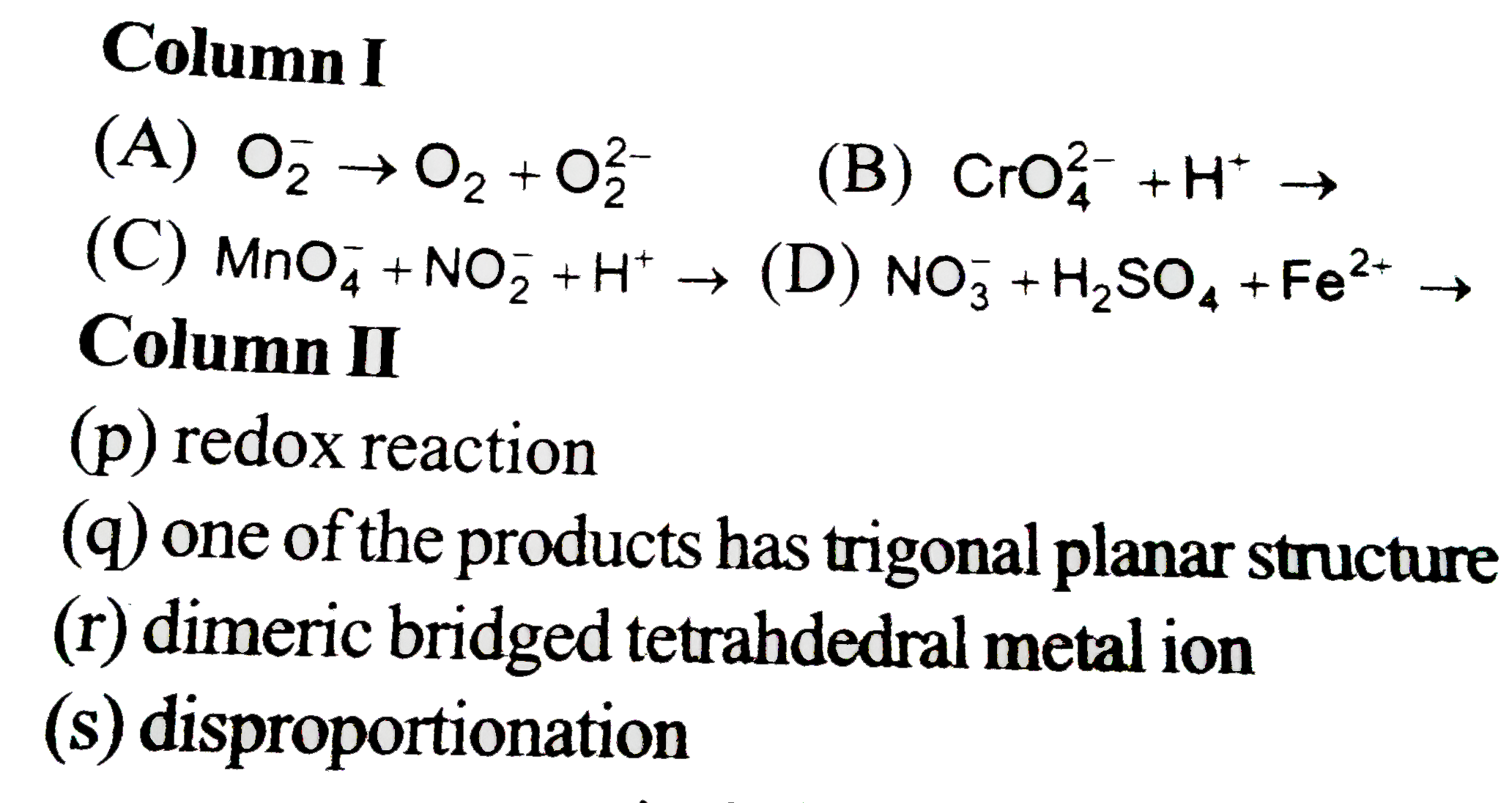
View SolutionDifferent types of equilibrium are given in column I. Match the types given in column I with conditions given in column II.
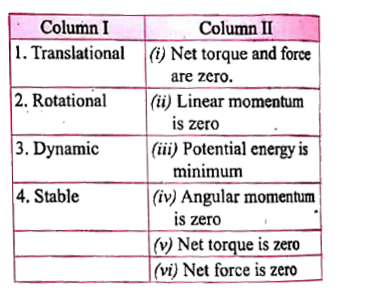
View SolutionDifferent types of equilibrium are given in column I. Match the types given in column I with conditions given in column II.

View SolutionMatch the type of fruits given in Column I with the examples given in Column II. Match the two columns and select the correct option.
View Solutionकॉलम I में दिए गए बहुलकों को कॉलम II में दिए गए आबंधन के प्रकार से सुमेलित कीजिए।

View Solutionकॉलम I में दी गयी संरचनाओं को कॉलम II में दिए गए अपमार्जक के प्रकारों से सुमेलित कीजिए।
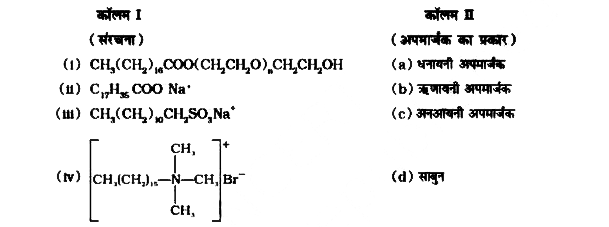
View Solutionकॉलम- I की स्पीशीज़ को कॉलम -II के प्रकार से सुमेलित कीजिए |
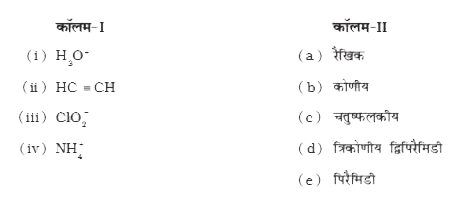
View Solutionअभिक्रिया के प्रकार से स्तंभ-I को स्तंभ-II से मिलान करें तथा उचित विकल्प को चिन्हित करें |
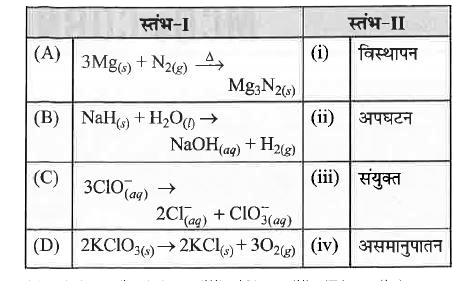
View Solutionकॉलम-I में एकक कोष्ठिका के प्रकार को कॉलम-II में गुणों के साथ मिलान कीजिये।

View Solutionकॉलम-I में दिए गए सकुलन के प्रकार को कॉलम-II में दिए गए बिन्दुओ से मिलान कीजिये।

View SolutionMatching Column Type

View Solution
